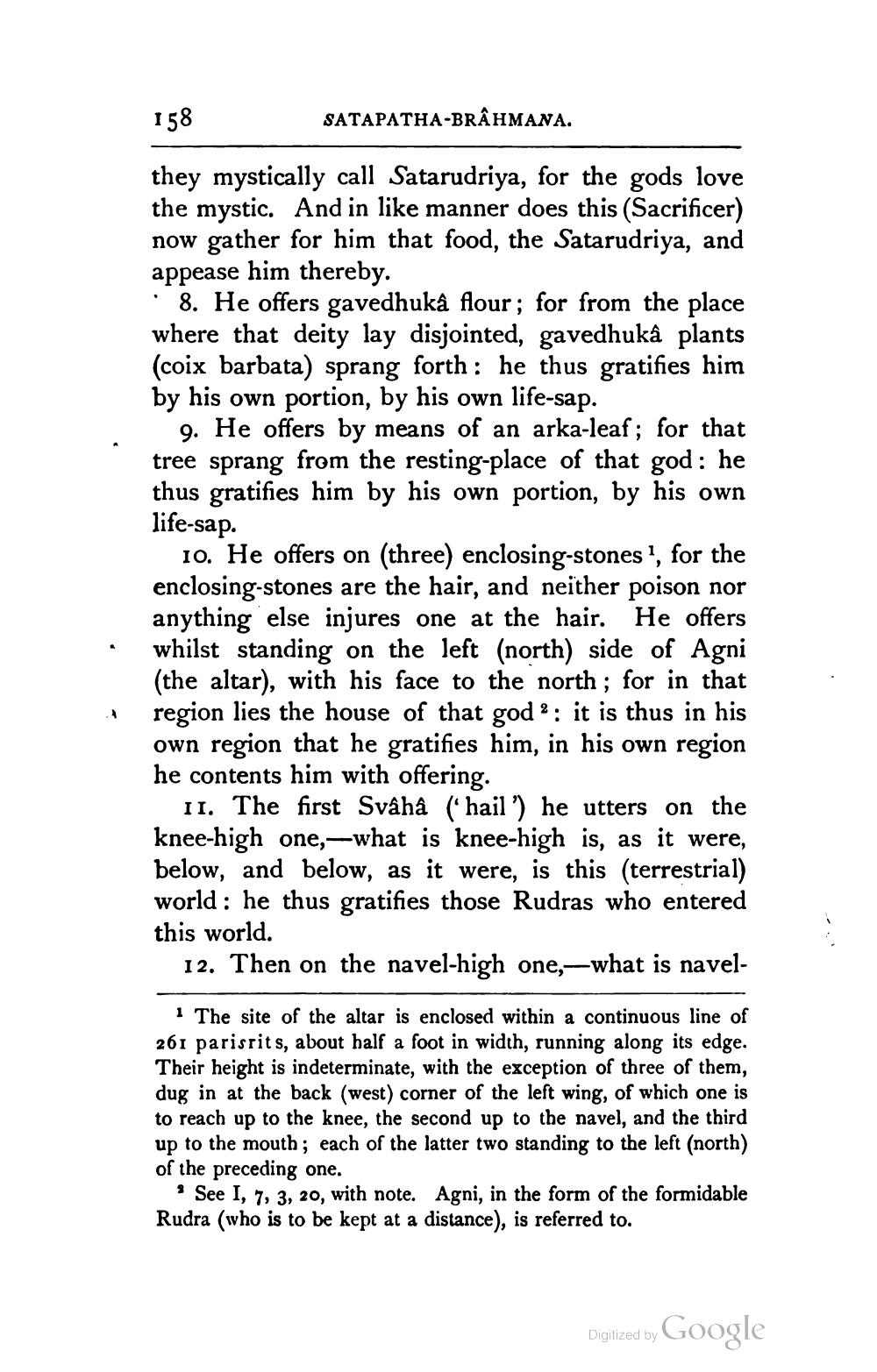________________
158
SATAPATHA-BRAHMANA.
they mystically call Satarudriya, for the gods love the mystic. And in like manner does this (Sacrificer) now gather for him that food, the Satarudriya, and appease him thereby. . 8. He offers gavedhuka flour; for from the place where that deity lay disjointed, gavedhukâ plants (coix barbata) sprang forth : he thus gratifies him by his own portion, by his own life-sap.
9. He offers by means of an arka-leaf; for that tree sprang from the resting-place of that god : he thus gratifies him by his own portion, by his own life-sap.
10. He offers on (three) enclosing-stones, for the enclosing-stones are the hair, and neïther poison nor anything else injures one at the hair. He offers whilst standing on the left (north) side of Agni (the altar), with his face to the north ; for in that region lies the house of that god ?: it is thus in his own region that he gratifies him, in his own region he contents him with offering.
11. The first Svâhâ (hail') he utters on the knee-high one, -what is knee-high is, as it were, below, and below, as it were, is this (terrestrial) world: he thus gratifies those Rudras who entered this world.
12. Then on the navel-high one,—what is navel
1 The site of the altar is enclosed within a continuous line of 261 parisrits, about half a foot in width, running along its edge. Their height is indeterminate, with the exception of three of them, dug in at the back (west) corner of the left wing, of which one is to reach up to the knee, the second up to the navel, and the third up to the mouth; each of the latter two standing to the left (north) of the preceding one.
I See I, 7, 3, 20, with note. Agni, in the form of the formidable Rudra (who is to be kept at a distance), is referred to.
Digitized by Google




